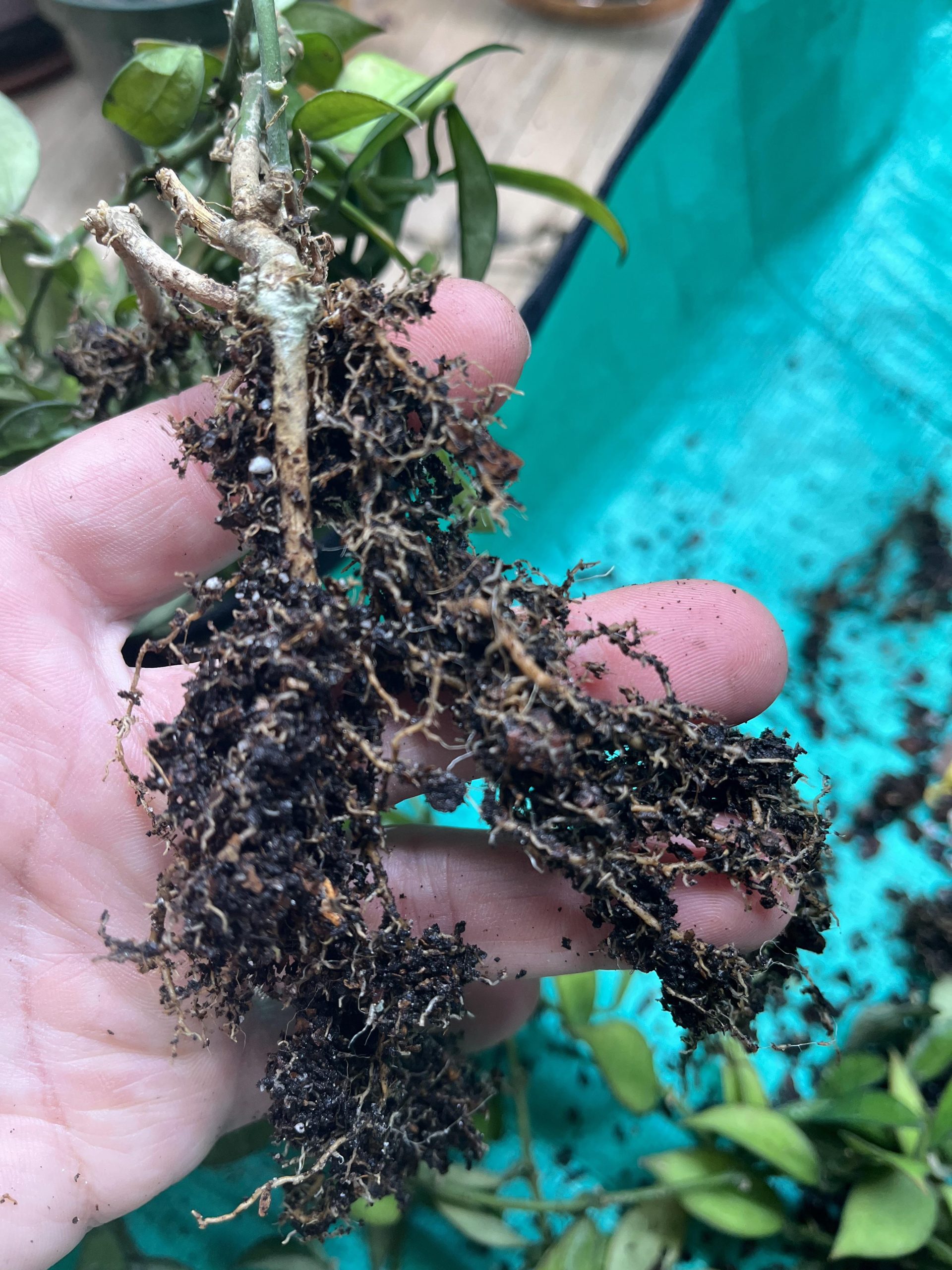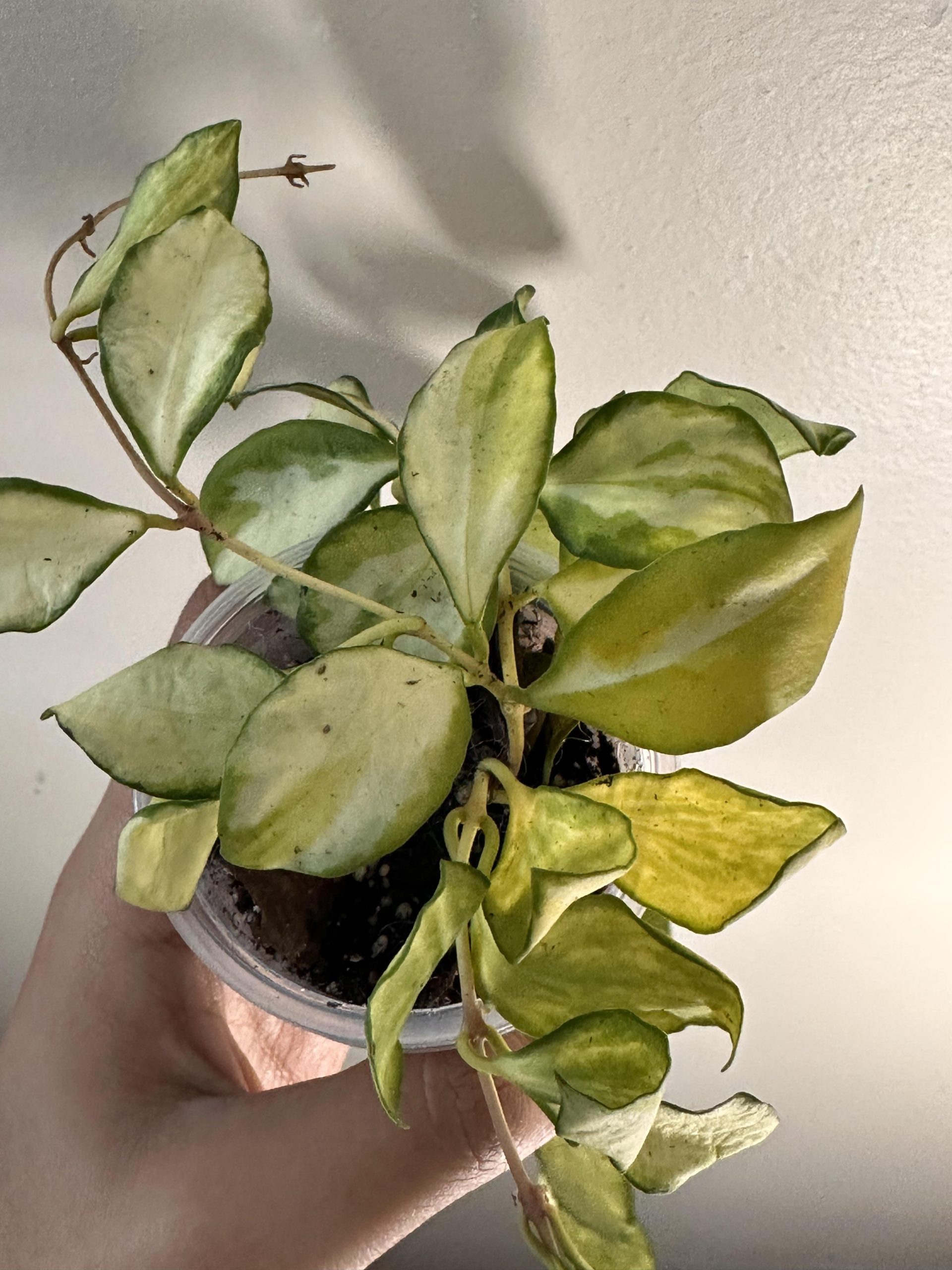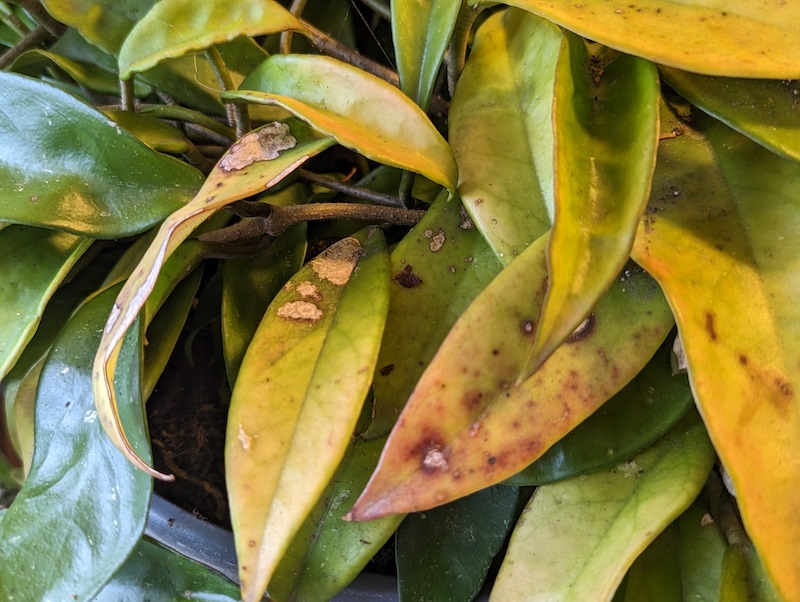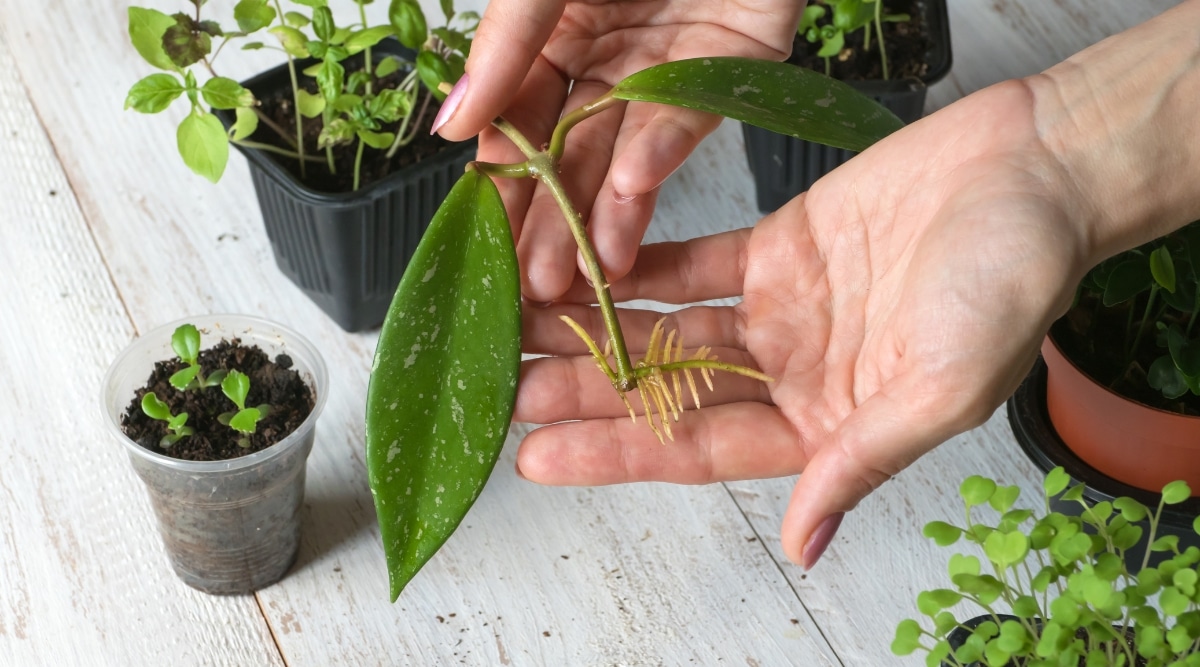How to save a dying Hoya plant?
Hoya plants, also known as wax plants, are popular houseplants known for their waxy foliage and star-shaped flowers. However, hoyas can be temperamental plants and are prone to decline if their care needs are not met. If your hoya plant is looking sickly with yellowing, curling leaves or bald spots, don't give up on it just yet! With a little detective work and tender loving care, you can nurse a dying hoya back to health. Here are 6 simple steps to save your struggling hoya plant.
One of the most common killers of hoya plants is stem and root rot due to overwatering. Carefully remove the plant from its pot and inspect the roots. Healthy roots should be firm and white or green, while rotten roots will be brown, mushy or shriveled. If the roots are brown and smelly, you have root rot.
Trim off all the rotten roots with a sterile blade. Take several clippings of any still-healthy stems to propagate later. Repot the plant into fresh, well-draining soil formulated for hoyas. Be sure the pot has drainage holes. Only water when the top few inches of soil are dry. This allows more oxygen to reach the roots and prevents future rot.
How to identify root rot
- Roots are brown, mushy or hollow
- Foul odor from the roots or lower stems
- Yellowing, wilting foliage despite adequate watering

Treating root rot
- Trim off all affected roots
- Take clippings of healthy stems
- Repot in well-draining soil
- Allow soil to dry out between waterings
Lack of sunlight is another primary reason for hoya decline. Hoyas thrive in very bright, indirect light. Without enough sun exposure, the leaves turn pale, growth stalls, and the plant loses vigor.
Gradually acclimate your hoya to brighter conditions. Move it to a south or west-facing window where it gets several hours of direct sun a day without risk of afternoon scorching. You can also provide supplemental lighting with a grow light. The foliage should be a rich green, not yellowish. If the leaves start to burn, move it back slightly.
Signs of insufficient light
- Small, pale yellow leaves
- Leggy growth
- Slow growth
- Flower buds drop before opening

Optimizing light for hoyas
- South or west-facing window
- 4-6 hours direct sun daily
- Bright, indirect light rest of the day
- Supplemental lighting if needed
Hoyas thrive in average to high humidity levels of 40-60%. When humidity is too low, the foliage curls, browns, and takes on a crinkly appearance. Grouping plants together, using a pebble tray, or running a humidifier can raise the moisture in the surrounding air.
Misting plants provides very temporary humidity at best. For maximum benefit, use methods that continually increase humidity, like:
Methods to boost humidity
- Group plants together
- Use pebble trays filled with water
- Run a humidifier nearby
- Create a humidity tent or terrarium
Signs of low humidity
- Curled, wrinkled, papery leaves
- Leaf edges turn brown
- Increased susceptibility to pests

Discover the Perfect Hoya Plant – Shop Now!
Incorrect watering is one of the most common ways people kill their hoya plants. Hoyas are epiphytes that grow in tropical trees, so they prefer their soil to dry out between waterings. Let the top few inches become completely dry before watering again.
When in doubt, underwater rather than overwater. It's safer to wait a few extra days until the leaves just start to droop before watering. The exception is during the active growing period in spring and summer when they need more frequent watering to support new growth.
Watering best practices
- Allow soil to dry out between waterings
- Water less in winter
- Water more during growing season
- Wait until leaves droop slightly before watering again
- Always check soil moisture with finger
Signs of overwatering
- Wet, mushy stems
- Leaves yellow and drop
- Root rot
- Mold or fungi in soil

Spider mites, mealybugs and aphids can rapidly infest and weaken hoya plants. Inspect undersides of leaves and stems closely for tiny insects, webbing or sticky secretions. Using a magnifying glass helps spot early infestations.
Wash plants with insecticidal soap or neem oil to control most soft-bodied pests. For severe infestations, use horticultural oils or systemic granules. Isolate affected plants and treat repeatedly until all signs of pests are gone.
Common hoya pests
- Spider mites
- Mealybugs
- Aphids
- Scales

Controlling pests
- Check for signs of infestation regularly
- Wash plants with insecticidal soap
- Apply neem oil or horticultural oils
- Use systemic pest control products
- Isolate and treat repeatedly as needed
If despite your best efforts the main plant continues to fail, take clippings from any remaining healthy stems. Hoyas are easy to propagate. Simply take 4-6 inch cuttings, allow to callous, and root in water, perlite, or sphagnum moss.
Once rooted, pot up the new plants into well-draining soil. In a few months, you'll have brand new hoya plants to replace the struggling parent plant.
How to propagate hoya cuttings
- Take 4-6 inch stem cuttings below a node
- Remove lower leaves
- Allow to callous for 1-2 days
- Root in water, perlite or sphagnum moss
- Pot up once rooted

Benefits of propagating
- Salvages healthy parts of a dying plant
- Creates identical clones quickly
- Provides replacement plants if the original dies
Shipping: Door to door shipping, fast and safe with Dragon Courier
Biodiversity: Thailand is known for its rich biodiversity, including a wide variety of aroid species. This diversity allows importers to access a broad range of unique and exotic aroid plants.
Quality and Health of Plants: The suitable climate helps the plants grown here stay healthy and of high quality.
Cost-Effectiveness: Due to favorable growing conditions and efficient production methods, Thai aroid plants can often be more cost-effective compared to those from other countries.
Access to Hybrid Varieties: Thai growers are often involved in the development of new hybrid aroid varieties, offering unique plants that may not be available from other sources.
Hoya species are the most sought after by aroid plant lovers
Reviving a failing hoya takes some effort, but it's very rewarding to nurse a plant back to health. The keys are addressing issues like improper watering, lack of light, and disease as soon as you notice signs of decline. With adjustments to care and vigilant monitoring for pests, you can get your hoya thriving once again. Propagating offers insurance if the plant is beyond saving.
- Q: Why is my Hoya plant dying? A: There can be several reasons for a Hoya plant to decline, including overwatering, underwatering, poor light conditions, or pests. Identifying the specific issue is the first step in saving your plant.
- Q: How can I tell if my Hoya plant is underwatered or overwatered? A: Check the soil moisture level by inserting your finger about an inch into the soil. If it feels dry, your plant may need watering. If it feels soggy or the pot is sitting in water, it's likely overwatered. Yellowing leaves can also be a sign of overwatering, while wrinkled or shriveled leaves may indicate underwatering.
- Q: What are the ideal growing conditions for a Hoya plant? A: Hoyas thrive in bright, indirect sunlight. They prefer well-draining soil and should be watered when the top inch of soil is dry. Keeping them in a warm and humid environment can also promote healthy growth.
- Q: How can I revive a wilted Hoya plant? A: If your Hoya is wilting, address its watering needs immediately. Give it a thorough but controlled watering, allowing excess water to drain out. Trim any dead or yellowing leaves and move it to a spot with more appropriate light conditions.
- Q: What should I do if my Hoya plant has pests or diseases? A: If you suspect pests like mealybugs or aphids, gently remove them with a cotton swab soaked in rubbing alcohol. For fungal or bacterial diseases, isolate the affected plant, cut away infected parts, and apply a suitable fungicide or bactericide. Ensure good air circulation to prevent further issues.
See more Top 10 Hoya Varieties Perfect for Your Home!
https://bit.ly/46lOsxS
1. Check for root rot
One of the most common killers of hoya plants is stem and root rot due to overwatering. Carefully remove the plant from its pot and inspect the roots. Healthy roots should be firm and white or green, while rotten roots will be brown, mushy or shriveled. If the roots are brown and smelly, you have root rot.
Trim off all the rotten roots with a sterile blade. Take several clippings of any still-healthy stems to propagate later. Repot the plant into fresh, well-draining soil formulated for hoyas. Be sure the pot has drainage holes. Only water when the top few inches of soil are dry. This allows more oxygen to reach the roots and prevents future rot.
How to identify root rot
- Roots are brown, mushy or hollow
- Foul odor from the roots or lower stems
- Yellowing, wilting foliage despite adequate watering

Treating root rot
- Trim off all affected roots
- Take clippings of healthy stems
- Repot in well-draining soil
- Allow soil to dry out between waterings
2. Give it more sun
Lack of sunlight is another primary reason for hoya decline. Hoyas thrive in very bright, indirect light. Without enough sun exposure, the leaves turn pale, growth stalls, and the plant loses vigor.
Gradually acclimate your hoya to brighter conditions. Move it to a south or west-facing window where it gets several hours of direct sun a day without risk of afternoon scorching. You can also provide supplemental lighting with a grow light. The foliage should be a rich green, not yellowish. If the leaves start to burn, move it back slightly.
Signs of insufficient light
- Small, pale yellow leaves
- Leggy growth
- Slow growth
- Flower buds drop before opening

Optimizing light for hoyas
- South or west-facing window
- 4-6 hours direct sun daily
- Bright, indirect light rest of the day
- Supplemental lighting if needed
3. Increase humidity
Hoyas thrive in average to high humidity levels of 40-60%. When humidity is too low, the foliage curls, browns, and takes on a crinkly appearance. Grouping plants together, using a pebble tray, or running a humidifier can raise the moisture in the surrounding air.
Misting plants provides very temporary humidity at best. For maximum benefit, use methods that continually increase humidity, like:
Methods to boost humidity
- Group plants together
- Use pebble trays filled with water
- Run a humidifier nearby
- Create a humidity tent or terrarium
Signs of low humidity
- Curled, wrinkled, papery leaves
- Leaf edges turn brown
- Increased susceptibility to pests

Discover the Perfect Hoya Plant – Shop Now!
4. Adjust watering practices
Incorrect watering is one of the most common ways people kill their hoya plants. Hoyas are epiphytes that grow in tropical trees, so they prefer their soil to dry out between waterings. Let the top few inches become completely dry before watering again.
When in doubt, underwater rather than overwater. It's safer to wait a few extra days until the leaves just start to droop before watering. The exception is during the active growing period in spring and summer when they need more frequent watering to support new growth.
Watering best practices
- Allow soil to dry out between waterings
- Water less in winter
- Water more during growing season
- Wait until leaves droop slightly before watering again
- Always check soil moisture with finger
Signs of overwatering
- Wet, mushy stems
- Leaves yellow and drop
- Root rot
- Mold or fungi in soil

5. Monitor for pests
Spider mites, mealybugs and aphids can rapidly infest and weaken hoya plants. Inspect undersides of leaves and stems closely for tiny insects, webbing or sticky secretions. Using a magnifying glass helps spot early infestations.
Wash plants with insecticidal soap or neem oil to control most soft-bodied pests. For severe infestations, use horticultural oils or systemic granules. Isolate affected plants and treat repeatedly until all signs of pests are gone.
Common hoya pests
- Spider mites
- Mealybugs
- Aphids
- Scales

Controlling pests
- Check for signs of infestation regularly
- Wash plants with insecticidal soap
- Apply neem oil or horticultural oils
- Use systemic pest control products
- Isolate and treat repeatedly as needed
6. Propagate healthy stems
If despite your best efforts the main plant continues to fail, take clippings from any remaining healthy stems. Hoyas are easy to propagate. Simply take 4-6 inch cuttings, allow to callous, and root in water, perlite, or sphagnum moss.
Once rooted, pot up the new plants into well-draining soil. In a few months, you'll have brand new hoya plants to replace the struggling parent plant.
How to propagate hoya cuttings
- Take 4-6 inch stem cuttings below a node
- Remove lower leaves
- Allow to callous for 1-2 days
- Root in water, perlite or sphagnum moss
- Pot up once rooted

Benefits of propagating
- Salvages healthy parts of a dying plant
- Creates identical clones quickly
- Provides replacement plants if the original dies
Where to buy hoya plant? Benefits from importing plants from Thailand
Shipping: Door to door shipping, fast and safe with Dragon Courier
Biodiversity: Thailand is known for its rich biodiversity, including a wide variety of aroid species. This diversity allows importers to access a broad range of unique and exotic aroid plants.
Quality and Health of Plants: The suitable climate helps the plants grown here stay healthy and of high quality.
Cost-Effectiveness: Due to favorable growing conditions and efficient production methods, Thai aroid plants can often be more cost-effective compared to those from other countries.
Access to Hybrid Varieties: Thai growers are often involved in the development of new hybrid aroid varieties, offering unique plants that may not be available from other sources.
Hoya species are the most sought after by aroid plant lovers
Conclusion
Reviving a failing hoya takes some effort, but it's very rewarding to nurse a plant back to health. The keys are addressing issues like improper watering, lack of light, and disease as soon as you notice signs of decline. With adjustments to care and vigilant monitoring for pests, you can get your hoya thriving once again. Propagating offers insurance if the plant is beyond saving.
FAQ
- Q: Why is my Hoya plant dying? A: There can be several reasons for a Hoya plant to decline, including overwatering, underwatering, poor light conditions, or pests. Identifying the specific issue is the first step in saving your plant.
- Q: How can I tell if my Hoya plant is underwatered or overwatered? A: Check the soil moisture level by inserting your finger about an inch into the soil. If it feels dry, your plant may need watering. If it feels soggy or the pot is sitting in water, it's likely overwatered. Yellowing leaves can also be a sign of overwatering, while wrinkled or shriveled leaves may indicate underwatering.
- Q: What are the ideal growing conditions for a Hoya plant? A: Hoyas thrive in bright, indirect sunlight. They prefer well-draining soil and should be watered when the top inch of soil is dry. Keeping them in a warm and humid environment can also promote healthy growth.
- Q: How can I revive a wilted Hoya plant? A: If your Hoya is wilting, address its watering needs immediately. Give it a thorough but controlled watering, allowing excess water to drain out. Trim any dead or yellowing leaves and move it to a spot with more appropriate light conditions.
- Q: What should I do if my Hoya plant has pests or diseases? A: If you suspect pests like mealybugs or aphids, gently remove them with a cotton swab soaked in rubbing alcohol. For fungal or bacterial diseases, isolate the affected plant, cut away infected parts, and apply a suitable fungicide or bactericide. Ensure good air circulation to prevent further issues.
See more Top 10 Hoya Varieties Perfect for Your Home!
https://bit.ly/46lOsxS
Nhận xét
Đăng nhận xét